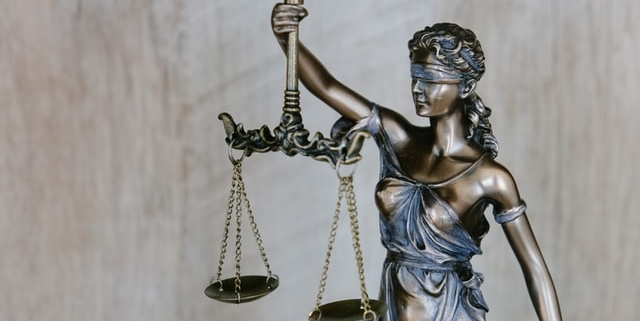The Abolition of Freedom of Expression, Including Speech
The Abolition of Freedom of Expression, Including Speech
On the 28th of October 2022, the Government released a new bill titled the Criminal Justice (Incitement to Violence or Hatred and Hate Offences) Bill 2022 (hereinafter referred to as the “Bill”).
In relation to this new proposed law, the Gov.ie website states the following:
- The Bill is designed to update laws criminalising hate speech and legislate against hate crimes for the first time in Irish law;
- The Bill includes provision to strengthen protections for genuine freedom of expression;
- The Bill includes a new list of identity characteristics protected under the law;
- The Bill is expected to become law before the end of the year;
- The Bill is intended to criminalise any intentional or reckless communication or behaviour that is likely to incite violence or hatred against a person or persons because they are associated with a protected characteristic. The penalty for this offence will be up to five years’ imprisonment;
- The Bill will also create new, aggravated forms of certain existing criminal offences, like assault, coercion, harassment etc, where it is found that those offences are motivated by hatred of a protected characteristic (such as race, colour, etc). These offences will carry an enhanced penalty and the criminal record will state that the offence was a hate crime;
- The Bill includes a demonstration test for hate crimes to make it easier to secure prosecutions and convictions for crimes motivated by hate;
- The protected characteristics in the new Bill are race; colour; nationality; religion; national or ethnic origin; descent; gender; sex characteristics; sexual orientation; and disability;
- Gender, disability, descent and sex characteristics were not included in the 1989 Act, and descent and sex characteristics have been added in recent months following additional consultation with key stakeholders;
- The Bill has been created to ensure that it captures hate speech in an online context, particularly in a social media environment; and
- Finally, a quote from Helen McEntee in relation to the introduction of this new Bill “There are protections for freedom of expression built into this legislation. But ultimately, hate speech is not about free speech. Hate speech is designed to shut people down, to shut them up, to make them afraid to say who they are and to exclude and isolate them. There is nothing free about that, and there is, frankly, no place for it in our society.”
Review of the Bill
The Bill is split into 4 parts as follows:
Part 1: deals with issues such as definitions and the meaning of protected characteristics.
Part 2: is the section that provides for a new offence of incitement to violence or hatred which will replace the current law which is the Prohibition of Incitement to Hatred Act 1989.
Part 3: creates new, aggravated forms of certain existing criminal offences, where those offences are motivated by prejudice against a protected characteristic.
Part 4: deals with amendments to other pieces of existing legislation which will be required as a result of the passing of this Bill.
Part 1 of the Bill: Preliminary and General
Part 1 Section 2 – is titled “Interpretation”. This section states that hatred means “hatred against a person or a group of persons in the State or elsewhere on account of their protected characteristics or any one of those characteristics” – so although this section purports to define hatred, it does not actually define what hatred is intended to mean. One interesting point to note is that the pre-bill called the General Scheme – Criminal Justice (Hate Crime) Bill 2021 did define hatred as meaning “detestation, significant ill will or hostility..”.
Part 1 Section 3 – lists out all of the characteristics that will be protected under this Bill and includes race, colour, nationality, religion, national or ethnic origin, descent, gender, sex characteristics, sexual orientation and disability. The majority of these characteristics are already protected under other pieces of legislation such as the Equal Status Acts and Employment Equality Acts, however, this Bill introduces some new categories such as:
- “Descent”, which includes “references to persons who descend from persons who could be identified by certain characteristics (such as race or colour), but not necessarily all of those characteristics still exist” –we have labelled this ancestral privilege;
- “Gender” now means “the gender of a person or the gender which a person expresses as the person’s preferred gender or with which the person identifies and includes transgender and a gender other than those of male and female”;
- “Sex characteristics”, which means “references to the physical and biological features of a person relating to sex”.
Part 2: Prohibition of Incitement to Violence or Hatred
Part 2 section 7(1) – creates a new offence of incitement to violence or hatred based on a person communicating material to the public or a section of the public or behaving in a public place in a manner that is likely to incite violence or hatred against a person or group of persons based on their protected characteristics.
Questions:
Three questions arise are
- what is material;
- what is a public place; and
- what is behaviour.
Part 2 section 6 – confirms that:
- material is anything that is capable of being looked at, read, watched or listened to;
- public place means any place to which the public has access; and
- behaviour include behaviour of any kind including things a person says, or otherwise communicates, as well as things a person does and such behaviour may consist of a single act or multiple acts.
To be guilty of an offence under Part 2 Section 7(1), a person only has to display, publish or make available any material (this could be verbal, in writing or even gestures) in a place where the public has access (even if the public is not accessing the place at the time) and one single act is enough to breach this new Bill. Also, the threshold for this offence is intent or recklessness, which means that a person can be prosecuted if they intended to incite violence or hatred, or they are reckless as to whether violence or hatred might be incited.
Part 2 section 7(3) – states that it will be a defence to this new crime of hate speech if the defendant can prove that the material consisted solely of a reasonable and genuine contribution to literary, artistic, political, scientific, religious, or academic discourse.
Notes in relation to this Defence
- The burden of proof is on the defendant to prove that the alleged hate speech is not hate speech.
- This Section 7(3) states that this defence is only available where the material consisted solely of a reasonable and genuine contribution …. In this regard, we expect that those prosecuting these types of offences will try to argue that while some of a persons speech might be considered a reasonable and genuine contribution, some other parts of the speech is simply inflammatory and therefore the person cannot rely on this defence of reasonable and genuine contribution, due to the inclusion of the word solely in this section.
- “Reasonable and genuine contribution”, in relation to literary, artistic, political, scientific, religious or academic discourse, means a contribution that is considered by a reasonable person as being reasonably necessary or incidental to such discourse.
- The courts will be employing the reasonable man test to determine what speech will be allowed. In this regard, I would suggest you ask yourself how comfortable you are with the average person dictating what speech you can use, and think about how the reasonable man or average person would have treated you over the past three years during Covid-19.
Hate Speech Penalties
The sentence for hate speech under this Part 2 on summary conviction is a Class A fine, which means a fine of up to €5,000 or imprisonment for a term not exceeding 12 months, or on conviction on indictment, to a fine or imprisonment for a term not exceeding 5 years or both.
Part 2 Section 8 – introduces a completely new offence of condonation, denial or gross trivialisation of genocide, a crime against humanity, a war crime etc against persons on account of their protected characteristics.
Part 2 Section 9 – states that a person may be found guilty of an offence under Sections 7 or 8 regardless of whether they were actually successful in inciting another person to violence or hatred.
Part 2 section 10 – creates a new offence of preparing or possessing material that is likely to incite violence or hatred. This section of the Bill is seeking to criminalise people who create content that would incite violence with the intention of communicating it, but have not yet communicated it publicly.
Part 2 Section 10(3) – states that where it is reasonable to assume that the material was not intended for the personal use of the person, the person shall be presumed, until they prove otherwise, to have committed an offence.
The penalties under this section are on summary conviction to a Class C fine, which means up to €2,500 or imprisonment for a term not exceeding 6 months or both, or on conviction on indictment to a Class A fine, so again this means a fine of up to €5,000 or imprisonment for a term not exceeding 2 years or both. It should be noted that these are the penalties that apply to a person who is found guilty of preparing or possessing material that might incite violence or hatred, but that has not been communicated to anyone as yet.
Protection of Freedom of Expression
This next section is truly insincere and deceitful. Part 2 Section 11 is titled “Protection of freedom of expression”. This section states that any material or behaviour is not taken to incite violence or hatred against a person or a group of persons on account of their protected characteristics or any of those characteristics solely on the basis that that material or behaviour includes or involves discussion or criticism of matters relating to a protected characteristic
Under this Section 11, discussion or criticism is said to be allowed. Discussion meaning the action or process of talking about something in order to reach a decision or to exchange ideas and criticism meaning the expression of disapproval of someone or something on the basis of perceived faults or mistakes.
There was no similar protection offered in the pre bill for protection of freedom of expression. As I said the inclusion of this Section 11 is truly deceitful, because one could be forgiven for assuming that the remainder of the Bill is somewhat nullified, as most content can be described as discussion or criticism.
That said, I believe this Section 11 was included in the Bill to ensure the Bill is passed by both Houses of the Oireachtas, but be under no doubt that the Gardai will entirely and wholeheartedly disregard this Section 11 when they are contemplating prosecutions. We make this assessment partially because the Gardai have gone so far as to task themselves with investigating and recording non hate crime incidents.
According to An Garda Siochana website a hate crime is “Any criminal offence which is perceived by the victim or any other person to, in whole or in part, be motivated by hostility or prejudice, based on actual or perceived age, disability, race, colour, nationality, ethnicity, religion, sexual orientation or gender.”, whereas, a hate incident, means any incident which is not a crime, but which “is perceived by any person to, in whole or in part, be motivated by hostility or prejudice, based on actual or perceived age, disability, race, colour, nationality, ethnicity, religion, sexual orientation or gender.”
Part 2 Section 15 – deals with search warrants and confirms that a District Court judge can issue a search warrant of any place where evidence of hate speech may be located, this section confirms that the Gardai may search any place noted in the warrant and any person located at that place, this section also confirms that the Gardai may use reasonable force to enter your property and they may examine, seize and retain anything found at that place including documents, phones, computers.
Part 3: Offences Aggravated by Hatred
Part 3 Sections 17-20 – create new aggravated forms of certain existing criminal offences where those offences are said to be motivated by prejudice against a protected characteristic. Sections 17-20 include for updated offences like damaging property aggravated by hatred; threatening, abusive or insulting behaviour in public place aggravated by hatred; distribution or display in a public place material which is threatening, abusive, insulting or obscene aggravated by hatred; entering a building, etc., with intent to commit an offence aggravated by hatred. There are approximately another 10 existing offences that have also been updated this way.
The updating of these existing criminal offences in essence creates new categories of crime, called hate crime. The net effect of hate crime is to create a hierarchy of justice, whereby a person who belongs to more minority groups will receive more justice. A simple example would be if a white person and a black person were both subjected to a physical assault, the perpetrator could receive a harsher sentence for their assault on the black person by virtue of the protected characteristic of their skin colour.
Part 4: Amendments of other Enactments
Part 4 – amends other pieces of existing legislation which would need to be updated by virtue of the passing of this Bill.
What Actions Can You Take
- Write to your TD’s and Senators
– Please find a template letter at the end of this page that you may use and adapt as you see fit. You will also find a second document setting out the contact details for all TD’s and Senators. Please do not wait to send this letter. Please do it today if you can.
- Protest
– We would encourage members of the public to organise protests throughout the country – the Irish Council for Human Rights will be happy to support and advertise any such protest. In this regard, please contact us at [email protected]

 Photo by Tingey Injury Law Firm on Unsplash
Photo by Tingey Injury Law Firm on Unsplash

